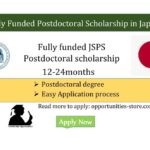I remember sitting at my desk, the glow of my laptop screen illuminating a future I desperately craved but couldn’t quite grasp. The idea of pursuing a PhD abroad wasn’t just an academic aspiration; it was a deep-seated longing for discovery, for challenging my own intellectual boundaries, and for experiencing life in a new corner of the world. But as with many grand dreams, there was a formidable gatekeeper: money. The cost of international tuition, living expenses, and everything else seemed like an insurmountable mountain range, stretching as far as the eye could see. For a long time, that mountain felt too high to climb, making the dream seem like a distant, beautiful mirage.
Many of you, I imagine, have felt that same pang of desire, coupled with the cold splash of financial reality. You envision yourself in historic libraries, cutting-edge labs, or vibrant international classrooms, but then the numbers flash across your mind, and a sigh escapes your lips. This, my friends, is precisely where the magic of PhD scholarships abroad steps in. They are not just grants; they are keys, opening doors to opportunities that might otherwise remain firmly shut. They transform a seemingly impossible dream into a tangible, achievable goal. And let me tell you, it’s not just for a select few geniuses; it’s for anyone with passion, persistence, and a well-crafted plan.
The allure of a PhD abroad is multifaceted. Beyond the prestige of a global degree, it offers an unparalleled opportunity for personal growth. You’ll be immersed in a new culture, learning not just from textbooks but from everyday interactions, from the local coffee shop owner to your international classmates. You’ll develop a global network of peers and mentors, opening doors to collaborations and career paths you might never have imagined. Academically, you’ll gain exposure to diverse research methodologies, different schools of thought, and often, resources that might not be available in your home country. It’s an adventure for the mind, yes, but also for the soul.
But let’s be honest, the elephant in the room is always the cost. Tuition fees for international students can be staggering, sometimes reaching tens of thousands of dollars per year. Then there are living expenses – rent, food, transport, health insurance, books, and the occasional treat. It adds up quickly. This financial burden is often the primary reason why aspiring doctoral candidates hesitate or abandon their international dreams altogether. This is why understanding and actively pursuing scholarships isn’t just an option; it’s often a necessity. Think of scholarships not as charity, but as an investment. Universities and governments invest in promising researchers, believing that your work will contribute to knowledge, innovation, and society as a whole. Your task is to convince them that you are that investment.
So, what exactly are these scholarships? They come in many forms. Some are full scholarships, covering tuition, living expenses, health insurance, and sometimes even travel costs. These are, understandably, highly competitive. Others are partial, covering only tuition, or providing a stipend for living expenses. There are university-specific scholarships, government-funded programs, grants from international organizations, and even project-specific funding where a professor has secured a grant for a particular research topic and is looking for a PhD student to carry it out. The key is to understand that there’s a wide spectrum, and your chances aren’t limited to winning the lottery for a fully funded slot. Every bit of financial aid helps.
The hunt for these scholarships is where the journey truly begins. It’s not a passive waiting game; it’s an active, strategic quest. My first piece of advice is to start early. Like, really early. Months, even a year before your intended application cycle. This gives you ample time to refine your research interests, identify potential supervisors, and prepare stellar application materials.
Where do you even begin looking?
- University Websites: This is your primary battlefield. Every university worth its salt will have a dedicated section for prospective graduate students, and within that, information on funding. Don’t just look at the main university scholarship page; dig deeper into the specific department or faculty you’re interested in. Often, departments have their own pots of money or lists of funded projects. Look for “graduate scholarships,” “doctoral funding,” “research assistantships,” or “teaching assistantships” (which often come with tuition waivers).
- Government Scholarships: These are often the most generous and prestigious. Think about programs like the Fulbright Scholarship (for study in the USA), Chevening Scholarships (for study in the UK), DAAD Scholarships (for study in Germany), or Endeavour Scholarships (for study in Australia, though this particular program has changed names/structures over time, the concept of national government scholarships remains). Many countries have similar programs aimed at attracting international talent. Search for " Government Scholarships PhD" or " Scholarships for Study Abroad." These often have specific eligibility criteria based on nationality, academic background, and sometimes even a commitment to return to your home country after your studies.
- International Organizations and Foundations: Beyond governments, many philanthropic foundations and international bodies offer funding. Examples include the Gates Cambridge Scholarship, the Rhodes Scholarship, and various grants from organizations focused on specific research areas (e.g., health, environment, social justice). These are highly competitive but offer incredible opportunities and networks.
- Research Project-Specific Funding: This is a golden ticket. Sometimes, a professor (Principal Investigator or PI) secures a large research grant for a specific project. Part of that grant budget is allocated to hiring PhD students to work on the project. If your research interests align perfectly with an ongoing funded project, you have a strong chance. How do you find these? Look at faculty profiles on university websites. Many professors list their ongoing research projects and sometimes explicitly state if they are looking for PhD students. Don’t be afraid to email professors whose work excites you, even if they don’t explicitly advertise a position. A well-researched, polite email can open doors.
- Online Scholarship Databases: Websites like ScholarshipPortal, FindAPhD, and various national education portals often aggregate scholarship opportunities. While these can be a good starting point, always verify information directly on the university or scholarship provider’s website.
Once you’ve identified potential scholarships, the real work begins: the application process. This is where you tell your story, showcase your abilities, and convince the selection committee that you are the ideal candidate. It’s a multi-faceted challenge, but each component plays a crucial role.
1. The Personal Statement / Statement of Purpose: This is arguably the most critical piece. It’s your narrative. Don’t just list your achievements; weave them into a compelling story. What sparked your interest in this field? What challenges have you overcome? Why this university, this department, this supervisor, and this specific research area? How does a PhD abroad align with your long-term career goals? Be authentic, passionate, and persuasive. Avoid generic statements; tailor each statement to the specific program and scholarship. Show, don’t just tell. Instead of saying "I am passionate about environmental science," describe an experience or a moment that ignited that passion.
2. Your Academic Transcripts and CV/Resume: These are your academic report card and professional summary. Ensure your transcripts are officially translated if required and highlight your strong academic performance. Your CV should be clear, concise, and highlight relevant experiences – research projects, publications (even conference presentations), internships, awards, and any leadership roles. Quantify your achievements where possible (e.g., "Managed a team of 3 research assistants," "Increased efficiency by 15%").
3. Letters of Recommendation: These are endorsements from people who know your academic and research capabilities well. Choose professors or supervisors who know you beyond just your grades. Provide them with all necessary information: your CV, personal statement, research proposal, and the scholarship details. Give them ample time (at least a month) and gently remind them. A strong letter of recommendation can significantly boost your application. A good recommender will speak to your intellectual curiosity, work ethic, research potential, and suitability for a PhD program.
4. The Research Proposal: For many PhD scholarships, especially those tied to specific projects or where you’re proposing your own research, a strong proposal is non-negotiable. This is where you demonstrate your ability to think critically, design research, and contribute to your field. It needs to be well-structured, clearly articulated, and innovative.
- Introduction: Briefly introduce your research problem and its significance.
- Literature Review: Show you understand the current state of knowledge and identify gaps.
- Research Questions/Hypotheses: Clear, focused, and answerable.
- Methodology: How will you answer your questions? What methods will you use? Why are they appropriate?
- Expected Outcomes/Contribution: What do you hope to achieve? How will your research contribute to the field?
- Timeline & Resources: A realistic plan for completing your research.
- References: A comprehensive list of sources.
This isn’t just an academic exercise; it’s a blueprint for your next several years. Seek feedback from professors or mentors before submitting.
5. Language Proficiency Tests: For non-native English speakers, an IELTS or TOEFL score is almost always required. Plan to take these well in advance to ensure you meet the minimum requirements and have time for a retake if needed. Don’t underestimate the importance of these scores; they are often a non-negotiable entry barrier.
6. Interviews: If you make it to the interview stage, congratulations! This means they are seriously considering you. Prepare by researching the faculty, their work, and formulating thoughtful questions about the program and potential research. Practice articulating your research interests, your motivations, and your future aspirations. Be ready to discuss your proposal in detail. Show enthusiasm, intellectual curiosity, and a collaborative spirit.
Throughout this entire process, there are common pitfalls I’ve seen many aspiring students stumble into. Don’t be one of them. First, procrastination is your enemy. Applications are complex and time-consuming. Starting early gives you the luxury of refining your essays, getting feedback, and ensuring everything is perfect. Second, generic applications are often rejected. Each scholarship and program is unique; your application must reflect that. Copy-pasting the same statement of purpose to multiple universities is a recipe for failure. Tailor everything. Third, underestimating the time commitment required for a PhD itself. A scholarship helps financially, but a PhD is a marathon, not a sprint. Be prepared for the intellectual rigor and the emotional rollercoaster. Finally, and perhaps most importantly, fear of rejection can be paralyzing. You will likely face rejections. It’s part of the process. Don’t let it deter you. Learn from each experience, refine your approach, and keep going. My own journey wasn’t a straight line; it was full of detours and setbacks, but each one taught me something valuable.
Beyond securing the scholarship, what should you expect from the PhD journey itself? It’s a transformative experience. You’ll develop critical thinking skills, become an expert in your niche, and learn to manage large-scale projects. You’ll also face moments of self-doubt, isolation, and intense pressure. The academic environment abroad will challenge you in ways you didn’t anticipate, both intellectually and culturally. You’ll learn to navigate a new city, possibly a new language, and certainly a new academic system. You’ll build resilience, adaptability, and a global perspective that will serve you well, no matter where your career takes you. You’ll form friendships with people from all corners of the globe, creating a support system that often lasts a lifetime. These are the intangible benefits, often more valuable than the degree itself.
So, for those of you gazing at that mountain of a dream, feeling the pull of a PhD abroad, know this: it is absolutely within reach. The scholarships are out there, waiting for passionate, dedicated individuals like you. It requires meticulous research, unwavering persistence, and the courage to put yourself out there. It won’t be easy, but few truly rewarding journeys ever are. Imagine the feeling of receiving that acceptance letter, that scholarship offer – the culmination of your hard work, opening the door to a new chapter of discovery and growth. It’s a moment of pure triumph, a testament to your belief in yourself and your academic vision. Take that first step, dive into the research, craft your story, and don’t give up. Your global academic adventure is waiting.



